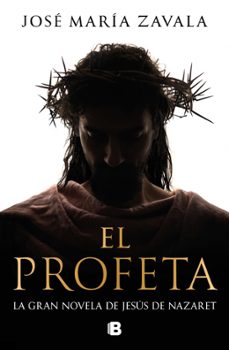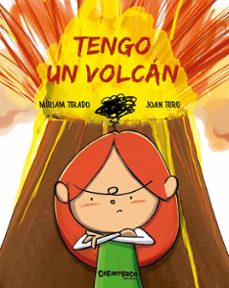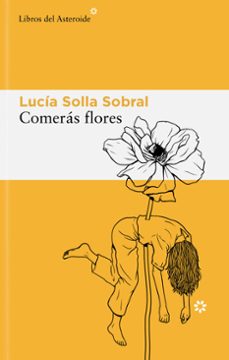Imprescindibles
Ficción
No Ficción
Ciencias y tecnología Biología Ciencias Ciencias naturales Divulgación científica Informática Ingeniería Matemáticas Medicina Salud y dietas Filología Biblioteconomía Estudios filológicos Estudios lingüísticos Estudios literarios Historia y crítica de la Literatura
Humanidades Autoayuda y espiritualidad Ciencias humanas Derecho Economía y Empresa Psicología y Pedagogía Filosofía Sociología Historia Arqueología Biografías Historia de España Historia Universal Historia por países
Infantil
Juvenil
#Jóvenes lectores Narrativa juvenil Clásicos adaptados Libros Wattpad Libros Booktok Libros de influencers Libros de Youtubers Libros Spicy Juveniles Libros LGTBIQ+ Temas sociales Libros ciencia ficción Libros de acción y aventura Cómic y manga juvenil Cómic juvenil Manga Shonen Manga Shojo Autores destacados Jennifer L. Armentrout Eloy Moreno Nerea Llanes Hannah Nicole Maehrer
Libros de fantasía Cozy Fantasy Dark academia Hadas y Fae Romantasy Royal Fantasy Urban Fantasy Vampiros y hombres lobo Otros Misterio y terror Cozy mistery Policiaca Spooky Terror Thriller y suspense Otros
Libros románticos y de amor Dark Romance Clean Romance Cowboy Romance Mafia y amor Romance dramatico Romcom libros Sport Romance Otros Clichés Enemies to Lovers Friends to Lovers Hermanastros Slow Burn Fake Dating Triángulo amoroso
Cómic y manga
Novela gráfica Novela gráfica americana Novela gráfica europea Novela gráfica de otros países Personajes, series y sagas Series y sagas Star Wars Superhéroes Cómics DC Cómics Marvel Cómics otros superhéroes Cómics Valiant
eBooks
Literatura Contemporánea Narrativa fantástica Novela de ciencia ficción Novela de terror Novela histórica Novela negra Novela romántica y erótica Juvenil Más de 13 años Más de 15 años Infantil eBooks infantiles
Humanidades Autoayuda y espiritualidad Ciencias humanas Economía y Empresa Psicología y Pedagogía Filosofía Historia Historia de España Historia Universal Arte Cine Música Historia del arte
Ciencia y tecnología Ciencias naturales Divulgación científica Medicina Salud y dietas Filología Estudios lingüísticos Estudios literarios Historia y crítica de la Literatura Estilo de vida Cocina Guías de viaje Ocio y deportes
Francisco Pacheco
Recibe novedades de FRANCISCO PACHECO directamente en tu email
Filtros
Del 1 al 4 de 4
PALLAS ATHENE 9781843680192
Collected for the first time in a new translation: here's two of the most important and far-reaching biographies of an artist ever written, and our principal sources for the life of Velazquez. Diego Velazquez (1599-1660) is for many the greatest painter ever to have lived. His astonishing naturalism had an immediate and lasting impact on his contemporaries, inspiring both awe and fierce debate. Most of what we know about Velazquez' life and incomparably successful career comes from these two biographies. Francisco Pacheco, a second rank painter, was Velazquez' teacher and eventually father in law - possibly the closest relationship betwen a painter and his biographer in all art. This Life , part of Pacheco's theoretical work, the Art of Painting , has never been translated before, and it reveals the scale of the challenge to traditional painting presented by Velazquez' insurmountable talent. Antonio Palomino, the Spanish Vasari, was born just after Velazquez died, but knew many of the painter's friends and colleagues. His biography, precise and detailed, is an incomparable source, but like Pacheco's text, also tackles the aesthetic debate engendered by Velazquez' choice of subject matter and style. Together, these biographies give an excitingly close insight into the mind and world of a great painter. The introduction by Michael Jacobs situates these biographies in the context of Spain's Golden Age, and the intellectual ferment in painting and in the theatre that lie behind Velazquez' magic. The translations are by Nina Ayala Mallory, the leading scholar of Spanish artistic biographies. The volume is richly illustrated with 30 plates illustrating the full gamut of Velazquez' work.
Ver más
Tapa blanda
FRANCISCO PACHECO y NOT. DE F.J. SANCHEZ CANTON
AUTOR-EDITOR 2910009697768
Tapa blanda
CATEDRA 9788437625553
El texto que se presenta sigue el tratado de Pacheco en su manuscrito original impreso posteriormente con alguna modificación en 1649. Arte de la Pintura es el mejor libro de este tema que la tradición hispánica nos ofrece, pues en él alienta con fuerza insospechada toda una época, uno de los momentos más complejos y brillantes de nuestra historia cultural y artística. El texto de Pacheco se completa con las anotaciones a los márgenes de otros autores, indicando siempre en nota la identidad del autor y el sentido de la notación.
Ver más
Tapa blanda
Editorial Maxtor 9788490015667
La obra de don Francisco Pacheco, maestro y suegro del gran pintor Velázquez, es de sumo interés para los pintores, por la enseñanza de la pintura práctica de todas las clases y sobre todas las materias, que se tiene que hacer para obtener buen resultado. Aqui encontramos una definicion de la pintura, un analisis de los estudios que debe hacer un pintor, la division de la pintura y sus partes, aspectos tambien sobre el dibujo, las medidas y proporciones, la perspectiva, escorzos, color. Tambien se dan consejos sobre los diferentes tipos de pintura: al temple, al fresco, al oleo, en caustica, el estofado, etc. Finalmente se incluye un tratado de restauracion donde podemos aprender a limpiar las pinturas al oleo, el lienzo, la tabla, la plancha y la madera.
Ver más
Tapa blanda
Del 1 al 4 de 4

























